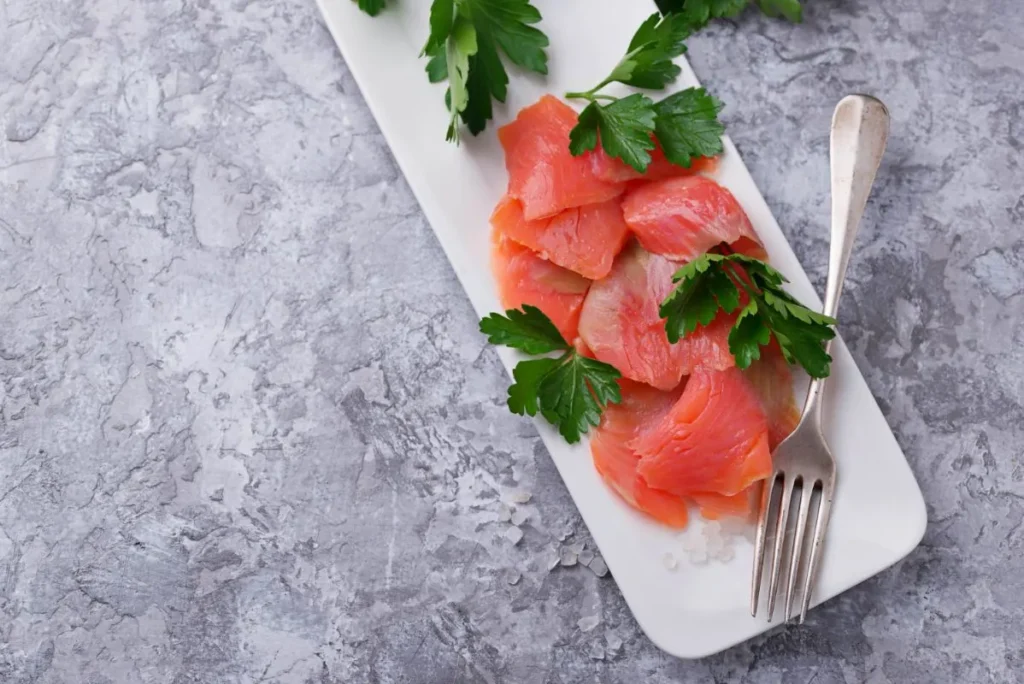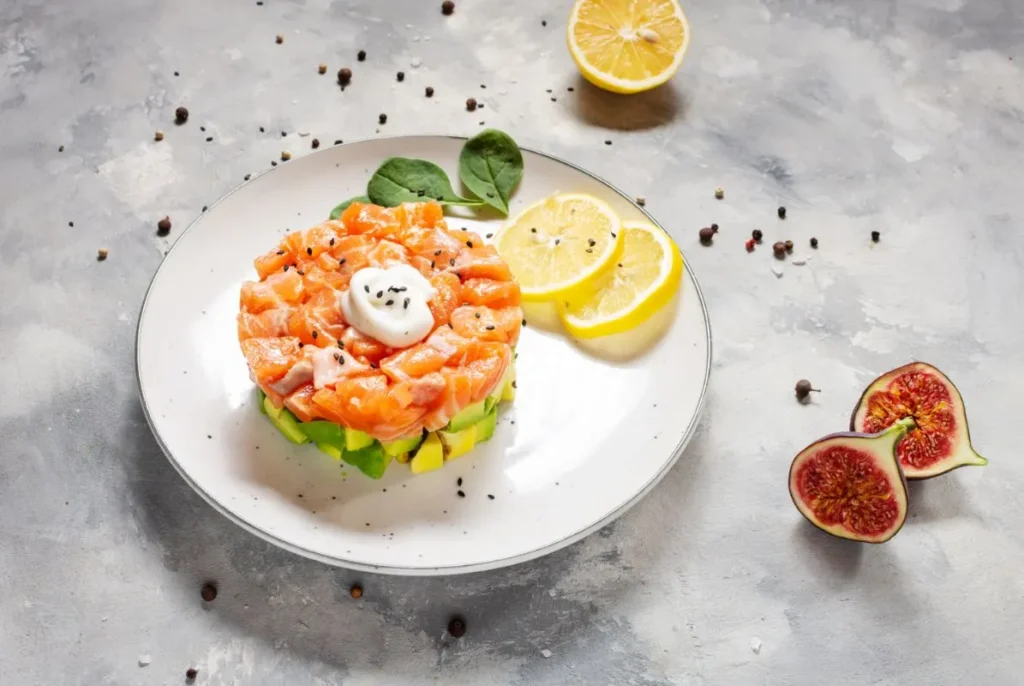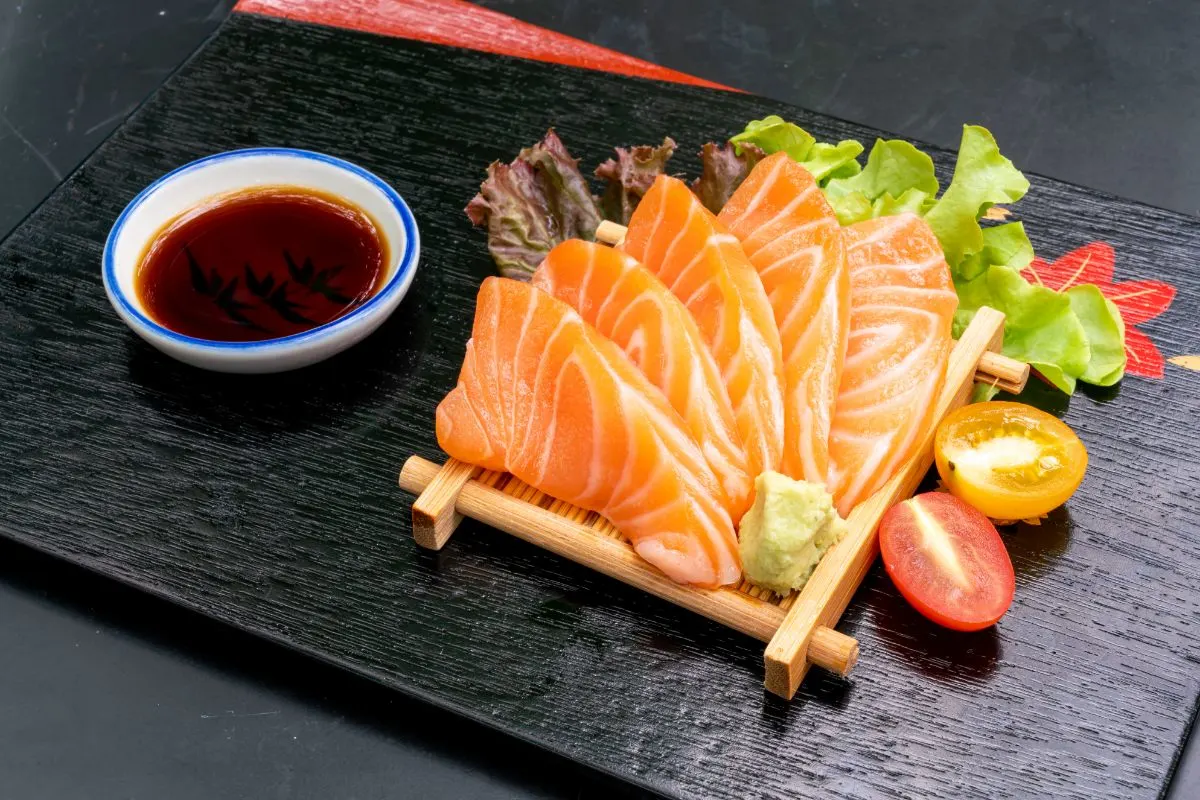Explore if raw salmon is safe to eat, along with best practices and expert tips.
Introduction
Raw salmon is a delicacy cherished by many culinary enthusiasts worldwide. In Japanese cuisine, for instance, salmon sashimi features prominently on sushi menus, while in Nordic countries, gravlax—a dry-cured salmon—is a traditional favorite. However, many people still wonder: Can you eat raw salmon safely, and what factors must you consider when doing so?
In this article, we will explore the risks, benefits, and best practices associated with consuming raw salmon. We will discuss safety concerns, potential parasites, ways to select top-quality fish, and practical preparation techniques you can apply at home. You will also find a step-by-step recipe for a delicious raw salmon dish—perfect for adventurous home cooks. Finally, we will address common questions about raw salmon in our FAQ section. By the end, you will have a thorough understanding of whether raw salmon is right for you and, if so, how to enjoy it responsibly.
Table of Contents

Why Raw Salmon Appeals to Many
Raw salmon’s popularity has soared in recent years, partly due to its distinct flavor and texture. When eaten raw, salmon has a buttery consistency that can feel light, refreshing, and surprisingly rich all at once. In addition, the beautiful pink-to-orange hue of fresh salmon adds visual appeal to dishes.
Nutritional considerations also drive its popularity. Salmon is naturally rich in omega-3 fatty acids, protein, vitamins, and minerals. Because cooking methods like grilling or baking can potentially degrade certain heat-sensitive nutrients, some individuals choose to eat salmon raw to preserve its original nutrient content.
Furthermore, various cuisines across the globe celebrate raw salmon in signature dishes. Japanese cuisine highlights salmon sashimi, while Hawaiians enjoy it in poke bowls. Nordic countries cure raw salmon to create gravlax, a tangy preparation balanced by sweetness, saltiness, and herbs. Thus, raw salmon has earned a revered spot in many cultural culinary traditions.
Interested in exploring more ways to incorporate salmon in your meals? Check out our Salmon Poke Recipe for a flavor-packed dish that highlights raw salmon’s freshness.
Common Risks of Eating Raw Salmon
Despite its popularity, raw salmon also carries certain risks. Understanding these dangers can help you make an informed decision and practice safe handling techniques. Therefore, it is essential to weigh the potential health hazards against the benefits.
Parasites and Pathogens
Parasites, such as roundworms (e.g., Anisakis), may be present in raw salmon. These tiny organisms can cause gastrointestinal disturbances, including stomach cramps, nausea, and vomiting. Consequently, freezing salmon to specific temperatures for a prescribed duration is recommended to kill these parasites before consumption.
Bacterial Concerns
Bacterial contamination, including Listeria monocytogenes or Salmonella, can occur if fish is not properly handled, stored, or transported. For instance, bacterial growth accelerates in fish kept above safe temperatures. Moreover, contamination from other raw meats in your refrigerator—if stored improperly—can transfer onto salmon through cross-contamination.
Heavy Metals and Mercury
Due to industrial pollution, fish can sometimes accumulate heavy metals. Larger, longer-living fish tend to contain higher mercury levels, but salmon typically has lower concentrations compared to species like swordfish or king mackerel. Nevertheless, it is wise to practice moderation in overall fish consumption to minimize exposure to mercury and other contaminants.
Cross-Contamination Issues
Even if your salmon is fresh and parasite-free, poor kitchen hygiene can lead to problems. Therefore, you should always disinfect cutting boards, knives, and counters before and after handling raw fish. In addition, keep separate utensils for raw salmon to reduce the risk of cross-contamination with other ingredients.
Health Conditions Requiring Caution
Individuals with weakened immune systems—such as pregnant women, young children, the elderly, or those with chronic illnesses—should be extra careful with raw salmon. Indeed, their vulnerability to foodborne illness may be higher. If you or someone in your household falls into these categories, always consult a healthcare professional before consuming raw seafood.
To further explore salmon-related topics, read our comparison article: Is King Salmon Better Than Regular Salmon? A Comprehensive Comparison for insights on variety and quality considerations.
Salmon Varieties and Reputable Sources
In order to reduce the risks associated with raw salmon, you must first select the right type of salmon from a trustworthy supplier. Many health experts agree that sourcing fish from certified fisheries or reputable markets can greatly reduce any safety concerns.
Wild-Caught vs. Farm-Raised Salmon
When choosing between wild-caught and farm-raised salmon, keep in mind that each variety has distinct qualities:
- Wild-Caught Salmon
Wild salmon typically have a more robust flavor and leaner texture. Moreover, these fish roam natural habitats, feeding on diverse diets that can contribute to a vibrant color and distinctive taste. Because they are caught in the wild, they may have a lower risk of certain contaminants, although environmental pollution remains a factor. - Farm-Raised Salmon
Farmed salmon often has a higher fat content, which some consumers enjoy for its richer flavor. Moreover, farming practices have evolved to reduce the use of antibiotics. However, the sustainability and environmental impact of fish farms can vary greatly. For some individuals, the source and farming conditions weigh heavily in their buying decisions.
Sushi-Grade vs. Regular-Grade Fish
“Sushi-grade” or “sashimi-grade” salmon refers to fish that has been handled according to specific standards, usually involving freezing at extremely low temperatures. Consequently, this treatment aims to eliminate parasites and reduce bacterial counts, making the fish safer for raw consumption. However, note that “sushi-grade” is not a strictly regulated term in many regions, so always buy from reputable sellers you trust.
Sustainability and Environmental Factors
Look for certifications like the Marine Stewardship Council (MSC) or the Aquaculture Stewardship Council (ASC). These labels indicate eco-friendly fishing or farming practices. Supporting sustainable methods not only helps protect the environment but also ensures that the salmon you purchase adheres to specific quality standards.
For more salmon-inspired meal ideas, explore our Delicious Salmon Breakfast Recipes that highlight different ways to enjoy this nutritious fish early in the day.
Safe Preparation and Storage Techniques
To ensure a healthy raw salmon experience, strict adherence to safe handling is crucial. In addition, maintaining proper storage temperatures helps keep bacteria at bay.
Freezing and Thawing Methods
Freezing salmon to an internal temperature of -4°F (-20°C) for at least seven days is widely recommended to kill most parasites. Some commercial freezers can achieve even lower temperatures for quicker parasite elimination. When thawing, place the salmon in the refrigerator rather than on the countertop, as temperature fluctuations can encourage bacterial growth.
Cutting, Cleaning, and Plating
After thawing the salmon, rinse it briefly under cold water and pat it dry with clean paper towels. Then, use a clean, sharp knife for slicing to reduce tearing and bruising of the flesh. Make sure to wash your hands thoroughly with warm soapy water before handling other ingredients. When plating, use separate surfaces for raw fish and produce.
Professional Chefs’ Best Practices
Renowned sushi chefs emphasize three main factors for safe raw fish consumption:
- Hygiene: Sterilizing knives, boards, and countertops in between uses.
- Freshness: Using only the highest-quality fish, ideally purchased from a trusted fishmonger.
- Timing: Preparing the salmon as close to serving time as possible to reduce the risk of bacterial growth.
If you love salmon in different forms, do not miss our Salmon Caesar Salad for a refreshing spin on a classic dish.
Culinary Uses and Flavor Profiles
Raw salmon lends itself to a variety of international dishes. Therefore, discovering new ways to serve it can expand your culinary repertoire.
Popular Raw Salmon Dishes
- Sashimi and Nigiri: Japanese staples showcasing the freshness and delicate texture of salmon.
- Poke Bowls: Hawaiian-inspired bowls typically combining raw fish, soy sauce, sesame oil, and toppings like seaweed or avocado.
- Salmon Tartare: Minced salmon combined with citrus, herbs, and seasoning.
- Carpaccio: Thinly sliced salmon often drizzled with olive oil and citrus-based dressing.
Flavor Pairings and Garnishes
Raw salmon pairs beautifully with fresh, vibrant flavors that highlight its natural richness. For instance, a squeeze of citrus—such as lemon or lime—helps cut through the fish’s buttery taste, while soy sauce, wasabi, and pickled ginger add tanginess and spice. Additionally, garnish your salmon dishes with toasted sesame seeds, chopped scallions, or microgreens for extra texture and visual appeal.
Innovative Preparations
Modern fusion cuisine has brought new twists to raw salmon dishes. For example, chefs might create salmon tataki by briefly searing the edges while keeping the center raw. Alternatively, salmon can be marinated in unique sauces that blend influences from Latin America, Southeast Asia, or the Mediterranean, introducing a delightful interplay of sweet, spicy, and savory notes.
Who Should Avoid Eating Raw Salmon
Despite its culinary allure, raw salmon may not be suitable for everyone. Thus, it is essential to identify whether you belong to a vulnerable group.
Vulnerable Groups
- Pregnant Women: The risk of parasites, bacteria, and mercury is a concern during pregnancy.
- Young Children: Their immune systems are still developing, making them more prone to foodborne illnesses.
- Elderly Individuals: Older adults may experience more severe complications if exposed to harmful pathogens.
- People with Compromised Immunity: Individuals with chronic illnesses or who are immunocompromised should consult with a healthcare provider before trying raw salmon.
Alternatives for Cautious Individuals
If raw salmon seems risky for you, consider alternative cooking methods that still preserve some of its delicate texture. For instance, lightly sear or poach your salmon to achieve a “medium-rare” interior. This approach reduces the probability of bacterial or parasitic contamination while still retaining much of the fish’s tenderness.
Want to discover more cooking approaches? Take a look at our Salmon Rice Recipe for a simple, flavorful meal that can be adapted to your preferred doneness level.
Recipe: Simple Salmon Poke Bowl
One of the most popular raw salmon dishes is the Hawaiian-inspired poke bowl. This recipe emphasizes fresh, high-quality salmon paired with bright, complementary flavors. Consequently, it is a great way to savor salmon’s natural taste.
Ingredients
- 1 lb (approximately 450 g) of sushi-grade raw salmon, skin removed, cut into 1-inch cubes
- 2 cups cooked white or brown rice (cooled)
- 2 tablespoons soy sauce (low-sodium recommended)
- 1 tablespoon sesame oil
- 1 tablespoon rice vinegar
- 1 teaspoon honey (optional for added sweetness)
- 2 tablespoons thinly sliced scallions
- 1 small avocado, sliced
- 1 teaspoon toasted sesame seeds
- Salt and pepper to taste
- Optional toppings: seaweed salad, pickled ginger, cucumber slices, or sliced radish
Step-by-Step Instructions
- Prepare the Salmon:
- Ensure your salmon is sushi-grade and properly thawed if frozen.
- Pat the fish dry with paper towels, then cut it into 1-inch cubes.
- Marinate the Fish:
- In a medium bowl, whisk together the soy sauce, sesame oil, rice vinegar, and honey.
- Gently add salmon cubes to the marinade, coating all sides.
- Cover and refrigerate for 15–20 minutes to allow flavors to merge.
- Assemble the Bowl:
- Divide cooked, cooled rice into serving bowls.
- Top each bowl with marinated salmon, avocado slices, scallions, and sesame seeds.
- If desired, include optional toppings like seaweed salad or pickled ginger.
- Season and Serve:
- Taste and adjust seasoning with salt, pepper, or more soy sauce.
- Enjoy your fresh salmon poke bowl immediately for best flavor and texture.

Nutritional Information
Below is approximate nutritional information per 100g of raw salmon (without marinade and toppings), to give you a general idea of its health benefits:
| Nutrient | Amount per 100g |
|---|---|
| Calories | 142 kcal |
| Protein | 20 g |
| Total Fat | 6 g |
| Saturated Fat | 1 g |
| Omega-3 Fatty Acids | ~1.2 g |
| Carbohydrates | 0 g |
| Fiber | 0 g |
| Sodium | 44 mg |
| Cholesterol | 55 mg |
(Note: The final nutritional profile of the poke bowl will depend on the quantity of rice, marinade, and toppings used.)
FAQ: Common Questions About Raw Salmon
Below, we address frequently asked questions about eating salmon in its raw state. These queries often arise due to understandable safety concerns.
Is it safe to eat salmon raw?
Yes, it can be safe to eat salmon raw if you purchase sushi-grade fish and follow proper handling, storage, and preparation methods. Freezing the salmon to certain temperatures before consumption typically kills parasites, and maintaining good kitchen hygiene reduces bacterial risks.
Can you eat salmon fully raw?
You can eat salmon fully raw as long as it is sourced from a reputable supplier who follows correct freezing and hygiene protocols. In addition, be sure to store the fish at appropriate temperatures and use it promptly to minimize bacterial growth.
Can you eat salmon a little raw?
Yes, partially cooked salmon (such as seared or lightly poached) is often considered a safer option for those hesitant about fully raw fish. Cooking it for a short duration can reduce some of the health risks, although any consumption of undercooked fish carries some level of risk.
Can I just eat raw salmon?
You can, but proceed with caution. Ensure that your salmon is sushi-grade and that you adhere to recommended food safety guidelines. If you have any concerns about parasites, pathogens, or allergies, consult with a health professional first.
Conclusion
Raw salmon, whether in sashimi, poke bowls, or other culinary creations, offers a delicious taste and notable nutritional benefits. However, it does come with risks such as parasites, bacterial contamination, and potential heavy metal exposure. Therefore, selecting high-quality, sushi-grade salmon from reputable sources and adhering to correct freezing, storage, and hygiene protocols is crucial.
If you are in a vulnerable group, you may want to avoid raw salmon altogether or explore alternative cooking methods. Yet, for many, raw salmon can be a safe and flavorful addition to their diet—provided they remain vigilant and informed. Ultimately, can you eat raw salmon? Absolutely—if you take the necessary steps to enjoy it responsibly.
For more inspiring salmon-focused dishes, consider our King Salmon Recipe Guide where we delve into delicious approaches suitable for various tastes.

